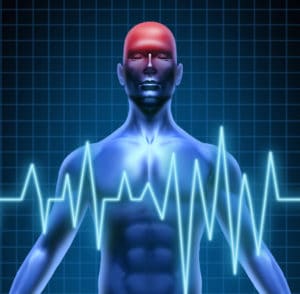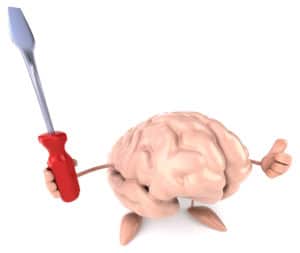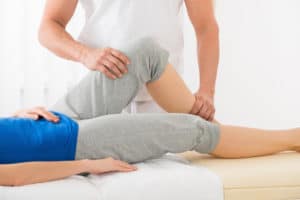Use it or Lose it: The Importance of Cortical Plasticity in Stroke Rehabilitation


Those who have survived a stroke may experience neurological damage that leads to deficiencies in their sensory and motor systems, such as limited use in their hands and/or arms. This damage also affects the sensory communication to the brain and impairs the ability to touch, feel, or be aware of joint movement. The combination of motor and sensory impairments significantly impacts stroke patients’ capacity to perform daily activities.
The Motor Cortex
Located in the frontal lobe of the brain is the area known as the motor cortex. There are three areas that comprise this important part of the cerebellum: the primary motor cortex, the premotor cortex, and the supplementary motor area. The motor cortex controls the higher levels of movement, such as voluntary action. When the neurons experience electrical stimulation in this part of the brain, associated body parts move. It is a complex process that involves making decisions and coordinating movements appropriately to perform an intended action.
How Strokes Affect the Motor Cortex

When the motor cortex becomes damaged from head injuries, including strokes or other accidents, it affects the ability of the brain to control the body’s movement.
The brain is divided into two halves, the right and the left hemispheres. Each hemisphere controls the voluntary movement of the half of the body opposite it, which is known as crossed control (e.g., the right half of the brain controls the left side of the body). Because of this, when one hemisphere of the brain experiences damage, the movement of the opposite side of the body is affected. When the damage is severe enough to completely destroy the system, paralysis occurs.
Any damage impacts a person's ability to control movement. For example, when a patient whose motor cortex is injured from a stroke tries to hold an object, the communication between the brain and rest of the body is delayed. This might cause the patient to have unsteady hands, stop prior to the target, move past it, or simply move too late.
Physical Conditions Resulting From Stroke
Common physical conditions after a stroke include:
- Weakness, paralysis, and problems with balance or coordination
- Pain, numbness, or burning and tingling sensations
- Fatigue
- Inattention to one side of the body, also known as neglect. In extreme cases, the patient may not be aware of their arm or leg
- Urinary or bowel incontinence
- Speech problems or difficulty understanding speech, reading, or writing
- Difficulty swallowing
- Memory problems, poor attention span, or difficulty solving problems
- Visual problems
- Depression, anxiety, or mood swings with emotional outbursts
- Difficulty recognizing limitations caused by the stroke
How the Motor Cortex is Repaired

Damage to the brain does not have to be permanent; the brain has the capability to repair itself thanks to cortical plasticity (neuroplasticity). Upon experiencing damage or injury, the brain builds new neural connections using cues from the environment and individual experiences.
Neuroplasticity and Neurorehabilitation
A certain amount of neuroplasticity occurs throughout a person's life, as it is part of learning to respond to a particular activity or behavior. This can be seen in brain scans when a person learns a new motor skill and corresponding regions in larger cortical territories light up.
Neurorehabilitation has been shown to support the brain's efforts to rebuild and reprogram itself. It requires task-orientated arm training and extensive practice to re-teach the brain. The surrounding tissue that remains healthy takes over some of the work of the damaged tissue. By conducting task training, this healthy tissue is stimulated, which facilitates the building of new connections between the healthy, intact neurons.
For these changes to occur in the motor cortex, it is important to conduct skill-dependent activities rather than use-dependent. For an activity to be considered skill-dependent, it requires a challenge rather than simple repetition. Training using tasks that require problem solving, or some other meaningful challenge, has greater success. Neural remodeling might occur anytime during the weeks to months after an injury, based on the experiences of an individual.
How Quickly Do Changes in the Motor Cortex Begin?
The old saying, "if you don’t use it, you lose it," is very apt for the motor cortex. Upon immobilization of a limb, there is a window of just nine days before the potential for recovery decreases. After not using the affected limb, the tissue around the cortical lesion or other damage in the brain starts to experience problems, which leads to further loss of function.
Thus, the sooner a patient begins therapy, the better. Starting a program with occupational therapists that stimulates and retrains the limb as soon as five days after the injury has the potential to minimize cortical loss and enhance the brain’s reorganizing capabilities. The brain constantly conducts neuroplastic changes through a variety of mechanisms, such as motor learning and peripheral deafferentation. Most likely, this plasticity leads to spontaneous recovery. However, it is best to stimulate reorganization in the damaged hemisphere to increase chances of recovery.
Effective Ways to Retrain Limb Use

There are several factors that affect stroke recovery: the amount of brain damage, the location of the damage, and the presence of healthy areas of the brain. Less damage tends to correspond with less disability, which translates to the greatest chance for recovery. And rehabilitation plays an important role in healing.
You will typically be in stage 1 or 2 of stroke recovery right after a stroke.
Treatments for Stage 1 of Stroke Recovery
For stage 1, follow the exercises and treatments laid out here. Treatments include:
- supporting affected limbs
- passive range of motion
- muscle facilitation
- movement exercises
- mirror-box therapy
- mental visualization
Treatments for Stage 2 of Stroke Recovery
For stage 2, follow exercises and treatments laid out here. Treatments include:
- positioning
- splinting
- electrical stimulation
- passive range of motion
- active range of motion
- stroke recovery gloves
- bilateral exercises
- sitting/standing/balance posture
- mental imagery
Exercises Based on Stroke Severity
It is important to remember that motor cortex deficits will differ depending on how severe the stroke is. For the patient with severe motor, sensory, and functional deficits, ensure that the arm and hand are in the proper position, mobile, and comfortable with no pain. There should be support during rest, and the upper limb should be handled carefully during the activities. Then, practice self range-of-motion exercises. You can use some of the same means of external support for the upper limb from stages 1 or 2.
For patients with moderate impairments who demonstrate high motivation and potential for functional motor gains, it is important to use repetitive, novel tasks that truly challenge the person. This helps to build the necessary neural networks to increase functional ability. Motor-learning training using imagery is very beneficial as well.
Rehabilitation is Key to Recovery
Stroke recovery is possible for many occupational therapists’ patients. Although it ultimately depends on the severity of the brain injury and the area affected, rehabilitation plays a key role in chances of success. Starting as soon as possible is key, since after nine days any repair becomes increasingly difficult. During rehab, a therapist may recommend products such as the SaeboGlove and other items that are made to improve motor functions.
All content provided on this blog is for informational purposes only and is not intended to be a substitute for professional medical advice, diagnosis, or treatment. Always seek the advice of your physician or other qualified health provider with any questions you may have regarding a medical condition. If you think you may have a medical emergency, call your doctor or 911 immediately. Reliance on any information provided by the Saebo website is solely at your own risk.
All content provided on this blog is for informational purposes only and is not intended to be a substitute for professional medical advice, diagnosis, or treatment. Always seek the advice of your physician or other qualified health providers with any questions you may have regarding a medical condition. If you think you may have a medical emergency, call your doctor or 911 immediately. Reliance on any information provided by the Saebo website is solely at your own risk.



